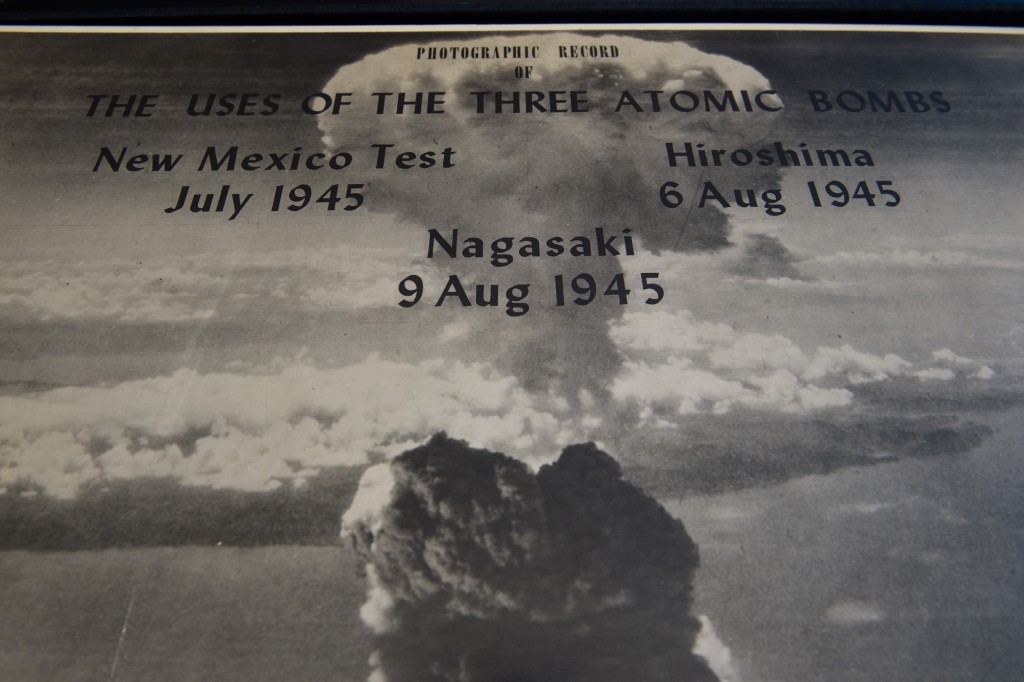
The institution has had the photographs since the 1990s, but Krepon last year decided to gift them to the Hiroshima Peace Memorial Museum. After some negotiation about where and how the photos would be displayed, they will be sent to Japan in the coming weeks.
/ AFP PHOTO /
WASHINGTON , United States (AFP) — Days after the United States dropped atomic bombs on Hiroshima and Nagasaki, an Army leader briefed a group of top government officials at the Department of War in Washington.
The officer, Major General Leslie Groves, carried with him a bundle of photos that may have shocked even those war-hardened men.
In fine resolution, the black-and-white pictures depicted the two mushroom clouds that defined the course of modern history, and showed what was left of the Japanese cities after the mega-blasts of August 6 and 9, 1945.
Groves had directed the Manhattan Project, in which physicists including Robert Oppenheimer designed and created the world’s first nuclear bombs.
“If you were a cabinet secretary, or one of the few who received this briefing, think of the sense of … awe and dread,” Michael Krepon, co-founder of Washington think tank the Stimson Center, said this week as he showed AFP the historic images.
“There’s no defense against this bomb.”
The institution has had the photographs since the 1990s, but Krepon last year decided to gift them to the Hiroshima Peace Memorial Museum.
After negotiations about how the photos would be displayed, they will be sent to Japan in the coming weeks.
“Not many people get to see this at the Stimson Center, it truly belongs I think with them as part of the historical record, so I reached out,” Krepon said of the collection of 20 or so images.
100 percent destruction
The photographic gift comes at a historic moment.
On May 27, President Barack Obama will become the first sitting US president to visit Hiroshima, where he will pay his respects at Hiroshima’s Peace Memorial Park accompanied by Japanese Prime Minister Shinzo Abe.
US officials have stressed there would be no apology for the city’s devastation. To this day, historians and politicians debate whether the horrendous civilian toll justified hastening the end of World War II.
About 140,000 people died after a B-29 bomber dropped its payload, code named Little Boy, on Hiroshima.
The weapon exploded at a height of about 500 yards (meters), generating a massive fireball and blast wave that leveled the entire city, killing tens of thousands of people.
Many more succumbed to injuries or illnesses caused by radiation in the weeks, months and years afterward.
The southern city of Nagasaki was hit by a second bomb, killing 74,000 people.
Japan’s Emperor Hirohito surrendered on August 15, 1945.
Vast swaths of both cities, including many military and industrial installations, were obliterated. The Stimson Center photos capture some of this destruction.
One annotated image lists Hiroshima’s railroad station, gas works, power station and textile mill as all being “100 percent” destroyed.
Damage in Nagasaki was described in similar terms, with a Mitsubishi plant, a steel and arms works and other factories all gone.
The photographs show how most structures disappeared, with only the strongest brick and steel buildings partially spared seemingly at random.
The Stimson Center obtained the photographs through a connection to Harvey Bundy, who was special assistant to Henry Stimson, the war secretary at the time from whom the Stimson Center takes its name.
Bundy was briefed by Groves, and his son, McGeorge Bundy, eventually bequeathed the images to the Stimson Center.
Had Japan not surrendered after the Nagasaki attack, the United States was prepared to keep dropping atomic bombs.
A potential target was the picturesque city of Kyoto, famed for its Buddhist temples and gardens. But Stimson, who had previously visited the city, ruled out its destruction.
“There was immense relief that after these two bombs, the emperor intervened,” said Krepon, a nuclear expert who worked under the administration of president Jimmy Carter on US-Soviet arms control.
wat/acb
© 1994-2016 Agence France-Presse








